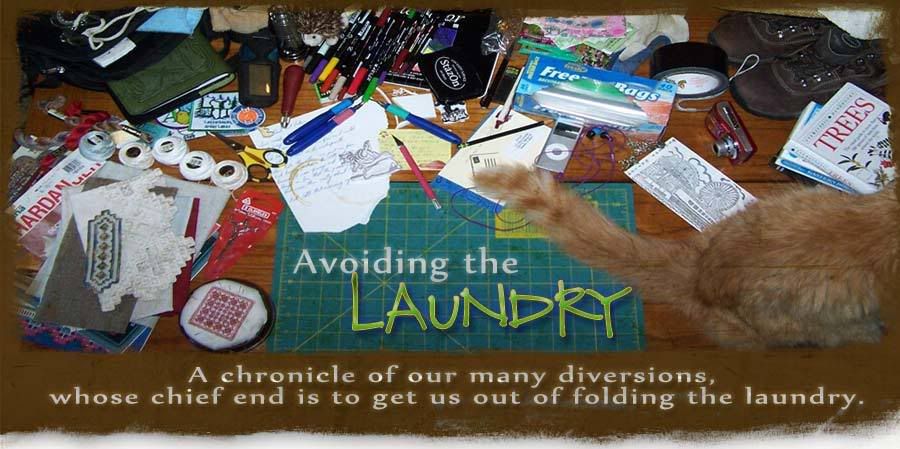First you need the recipe:
1 c. sugar
1/2 c butter, softened
1 egg
1 c. buttermilk (fresh is best, powdered is acceptable, but do not use soured milk)
3 c. flour
1 t. baking powder
1 t. baking soda
1/4 t. salt
Mix flour, baking powder, soda and salt in a bowl. Cream the butter and sugar, then add egg, buttermilk and flour mixture. Place in airtight container and chill overnight.
Quite a few recipes will use sour cream in place of buttermilk (at a different ratio), but we like this recipe better.
You will also need:
A Tablespoon
Flour for dusting
A cold surface for rolling. I have a cutting board that I put in the freezer before rolling.
Preheat the oven to 375*. Remove a small portion of the dough to work with at a time. I divide a single recipe into about 6 portions. If you take too much, it will get too soft before you can get them all rolled.
The keys to perfect Kringla are Cold, Speed, and a Light Touch. Prepare your rolling surface by dusting it lightly with flour. You only want enough flour to keep the dough from sticking, but not enough to make the Kringla powdery. Lightly flour your hands as well. Take a slightly rounded tablespoon of dough and using a very light touch, quickly roll it into a thin log about 6-7 inches long and about as thick as a sharpie marker (or just a touch thicker). This is where all of that practice making Play-doh snakes comes in handy.
 Expect your first several attempts to be disastrous. Once you get a feel for the dough and how much flour you need, things will begin to go much smoother.
Expect your first several attempts to be disastrous. Once you get a feel for the dough and how much flour you need, things will begin to go much smoother. There are two accepted shapes for Kringla: figure 8s, and pretzel/hearts. The pretzel shape is easier to start with. There will be a little bit of open space in either design before you bake them, but this dough puffs up considerably and those gaps will close--provided the spaces aren't too big.
There are two accepted shapes for Kringla: figure 8s, and pretzel/hearts. The pretzel shape is easier to start with. There will be a little bit of open space in either design before you bake them, but this dough puffs up considerably and those gaps will close--provided the spaces aren't too big. I put about 9 Kringla on a tray (Nordic Ware baking pans, of course.) Bake them at 375, one tray at a time for proper browning, for 10-12 minutes. When they are done, they will only be very slightly browned on the bottoms. The tops won't have much color at all, but should by dry and not doughy.
I put about 9 Kringla on a tray (Nordic Ware baking pans, of course.) Bake them at 375, one tray at a time for proper browning, for 10-12 minutes. When they are done, they will only be very slightly browned on the bottoms. The tops won't have much color at all, but should by dry and not doughy. This is a bad Kringla. It is "burnt" and the spaces are too open. The result is that it will be dry. My hubby will probably eat it anyway. A single batch should make about 30 Kringla. Yes, the spelling is the same for the singular and plural, just like "sheep".
This is a bad Kringla. It is "burnt" and the spaces are too open. The result is that it will be dry. My hubby will probably eat it anyway. A single batch should make about 30 Kringla. Yes, the spelling is the same for the singular and plural, just like "sheep". And this is a perfect plate of Kringla! The proper way to eat them is to butter the bottoms first. Of course, the Norwegian put butter on everything. Again, a warning: there isn't much to Kringla, but they go down awfully quick. In our family of four, I don't expect a single batch to last 48 hours. With or without the butter.
And this is a perfect plate of Kringla! The proper way to eat them is to butter the bottoms first. Of course, the Norwegian put butter on everything. Again, a warning: there isn't much to Kringla, but they go down awfully quick. In our family of four, I don't expect a single batch to last 48 hours. With or without the butter.Maybe next time, we'll do Potato Cakes!

yummy! great pics, too! :-)
ReplyDelete